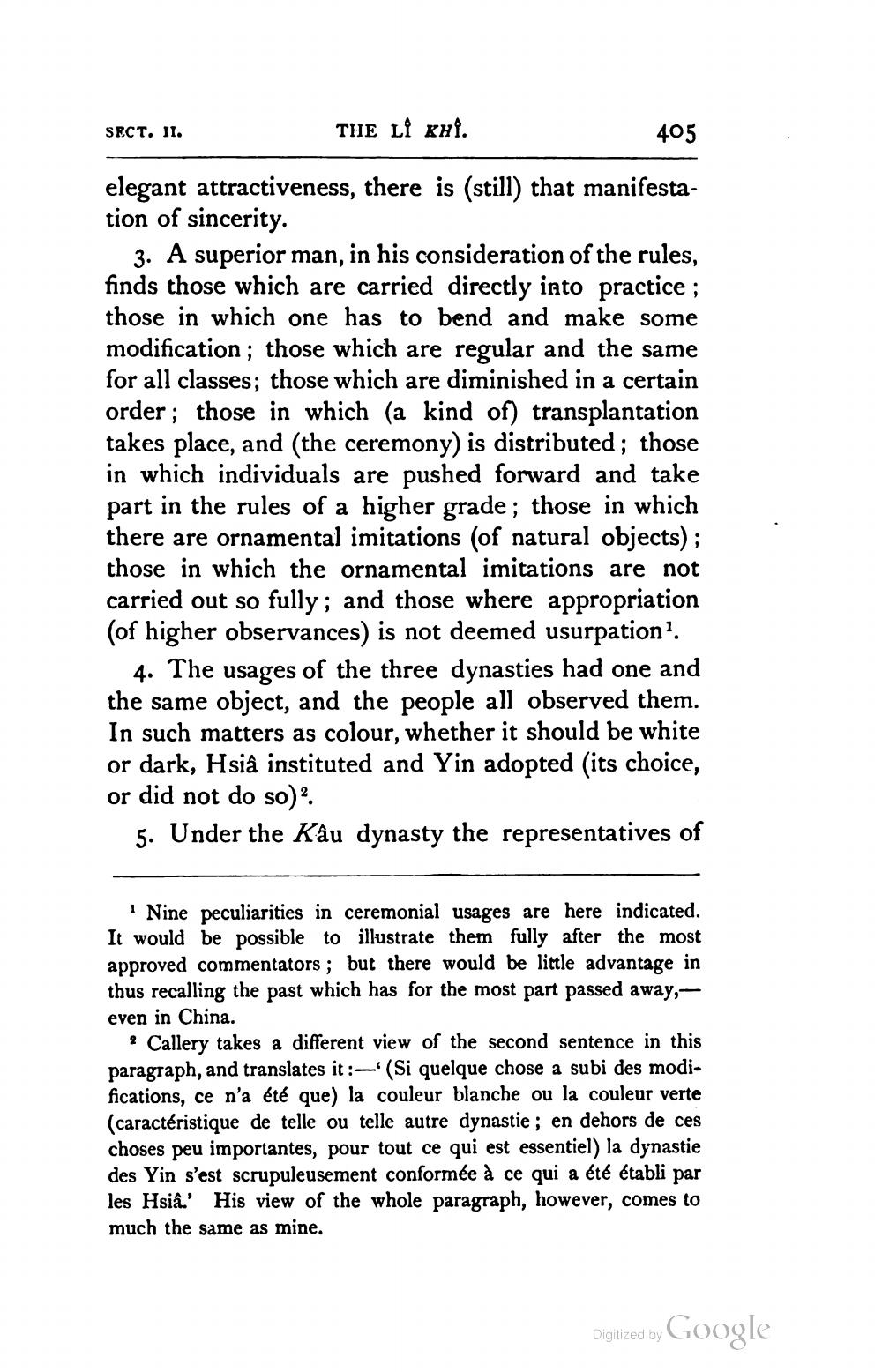________________
SECT. II.
THE LÎ xh.
405
elegant attractiveness, there is still) that manifestation of sincerity.
3. A superior man, in his consideration of the rules, finds those which are carried directly into practice ; those in which one has to bend and make some modification ; those which are regular and the same for all classes; those which are diminished in a certain order; those in which (a kind of) transplantation takes place, and (the ceremony) is distributed; those in which individuals are pushed forward and take part in the rules of a higher grade; those in which there are ornamental imitations (of natural objects); those in which the ornamental imitations are not carried out so fully; and those where appropriation (of higher observances) is not deemed usurpation'.
4. The usages of the three dynasties had one and the same object, and the people all observed them. In such matters as colour, whether it should be white or dark, Hsiâ instituted and Yin adopted (its choice, or did not do so).
5. Under the Kâu dynasty the representatives of
· Nine peculiarities in ceremonial usages are here indicated. It would be possible to illustrate them fully after the most approved commentators; but there would be little advantage in thus recalling the past which has for the most part passed away, even in China.
Callery takes a different view of the second sentence in this paragraph, and translates it :- (Si quelque chose a subi des modifications, ce n'a été que la couleur blanche ou la couleur verte (caractéristique de telle ou telle autre dynastie ; en dehors de ces choses peu importantes, pour tout ce qui est essentiel) la dynastie des Yin s'est scrupuleusement conformée à ce qui a été établi par les Hsia.' His view of the whole paragraph, however, comes to much the same as mine.
Digitized by Google




